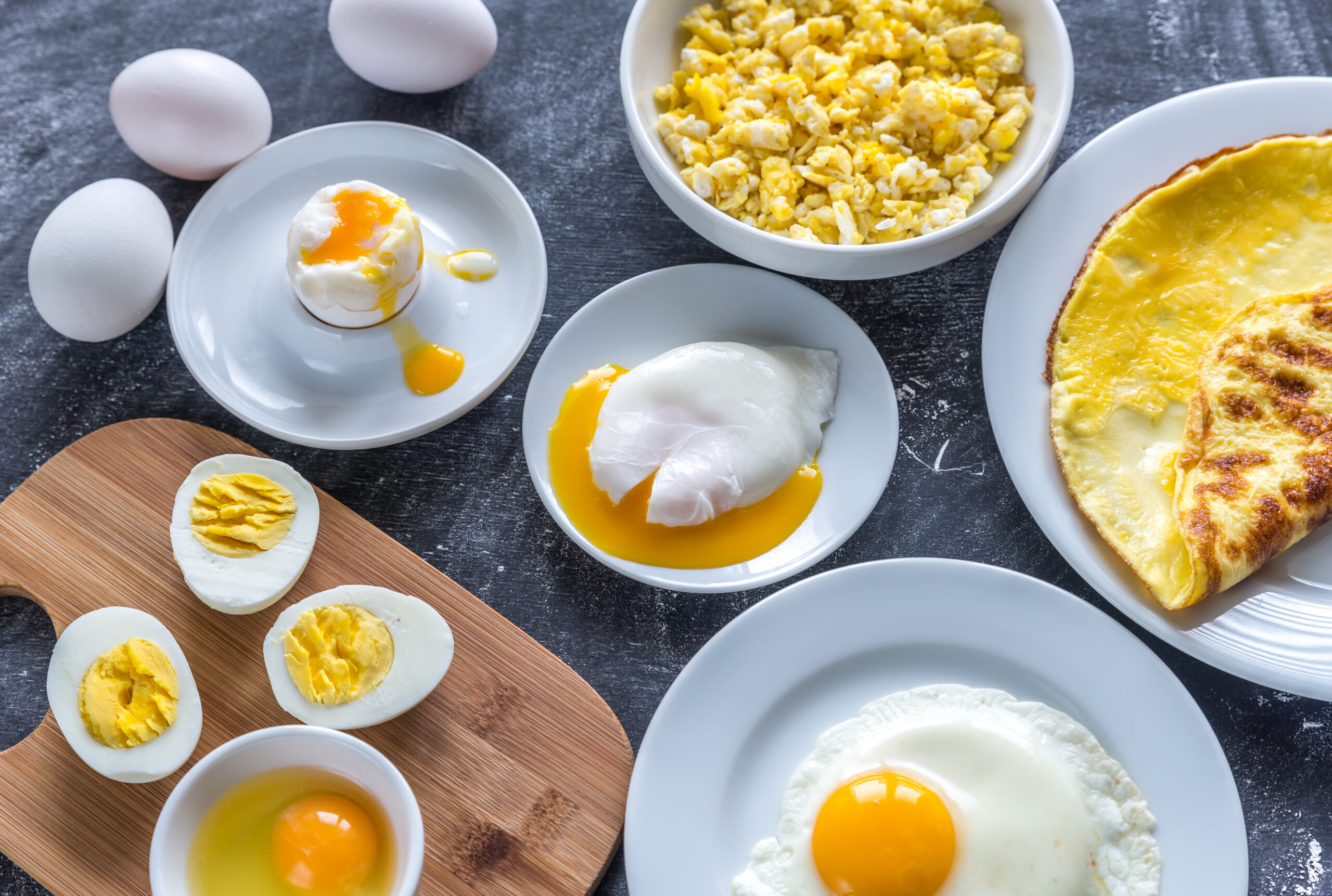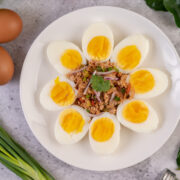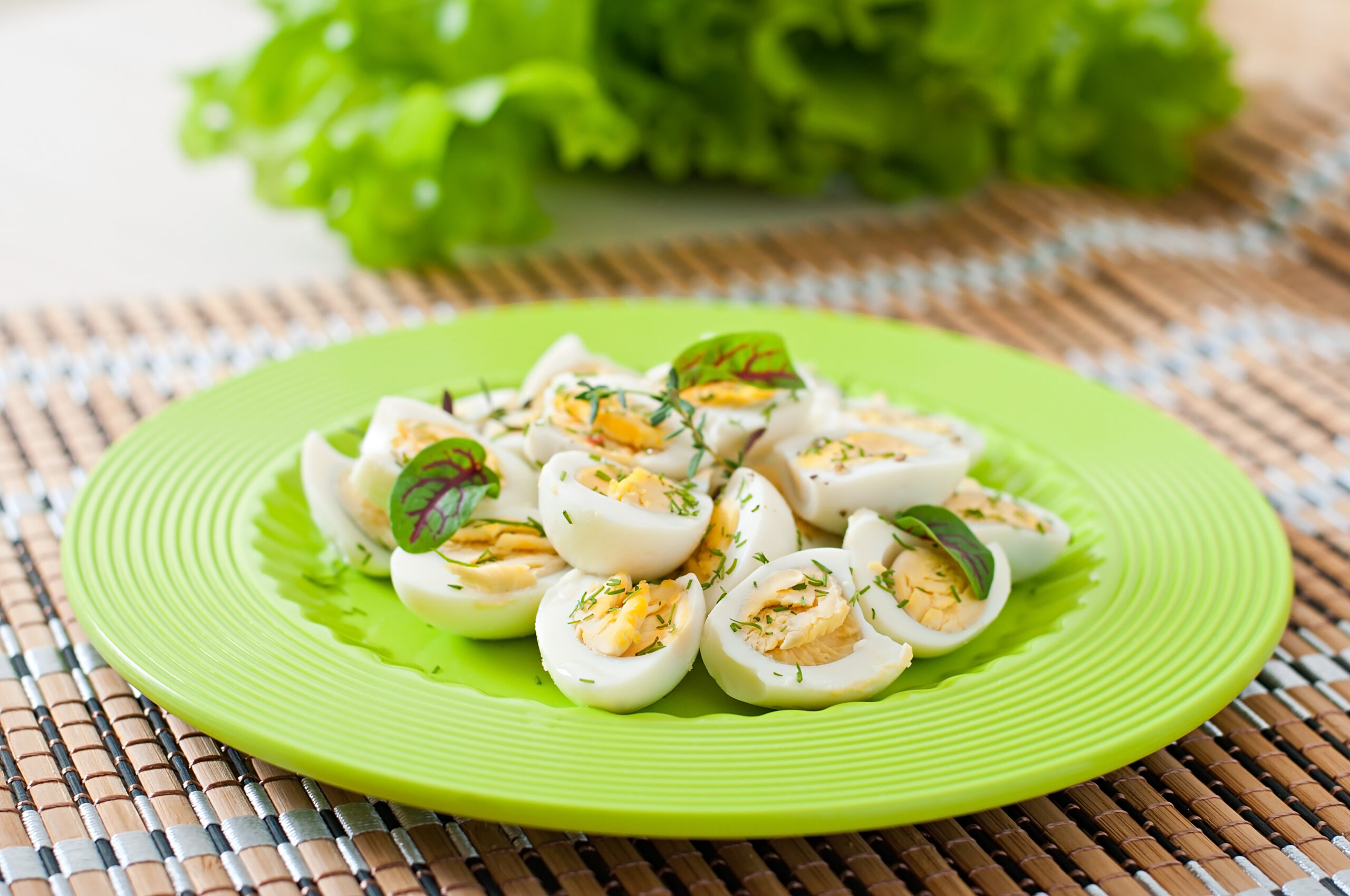When you first started learning to cook, one of the first things you probably learned to do was cook eggs. And I am sure you know that egg is one of the most versatile ingredients in the kitchen.
Cooking eggs can be done in a variety of ways. Notably, each technique is distinct from the others, and therefore, each of these approaches has its own set of unique outcomes.
Some of these techniques necessitate expertise, experience, and even specific tools, while others are simple enough for anybody to execute.

How to cook an egg
Hard-boiled egg
The most typical problem with boiling eggs is that they can easily be overdone, resulting in a strong green color around the yolk and a weird flavor. Here’s how I cook hard-boiled eggs without overcooking them.
Tips
- If you’ve boiled a batch of eggs and are having trouble peeling them, try shattering the shells all around without peeling them and soaking the eggs in water. Water often seeps through the cracks in the shell, making the egg easier to peel.
- If you’re going to make hard-boiled eggs and want them to be easy to peel, buy them at least a week – to two weeks – ahead of time. Peeling fresh eggs is more difficult than peeling older eggs.
Ingredients
- Eggs
Directions
- Fill a saucepan with cold water (about a quarter full). Then arrange the eggs in a single layer in the bottom of the pot. Make sure enough water should be added until the eggs are covered by an inch or two of water.
- You should also note that the more eggs you have in the pan, the more water you should pour on top of them.
- Over high heat, bring the water to a good rolling boil in the pot.
- Turn off the heat, but leave the pan on the hot burner, cover it, and set it aside 10-12 minutes.
- Drain the water from the pan and pour cold water over the eggs to fast cool them and prevent them from cooking any more. Alternatively, if you’re cooking a large batch of eggs, transfer them to a large dish of iced water with a spoon. Serve and enjoy.
Watch this video recipe to perfectly hard-boil eggs.
Poached egg
When it comes to brunch, poached eggs are a popular choice. But when was the last time you made them at home? Notably, you really don’t have to be a pro to get a perfectly runny yolk.
Tip
- You can employ a method of adding a small bit of vinegar to the boiling water to help the egg whites come together faster. If you want to try it, add one tablespoon of distilled white vinegar to the boiling water before adding the eggs. It’s absolutely optional and not even necessary, though.
- Try them over sautéed greens or on top of a grain salad for a healthy option. Better still, eat them plain with a piece of golden buttered bread.
View this post on Instagram
Ingredients
- Eggs
Directions
- Get a big pot, then gently bring water to a boil. Make sure you reduce the heat until the water is barely bubbling and not boiling. After that, add some salt to the water.
- To make it easier to pour the eggs into the water, crack them into little individual cups. Begin churning the water in a broad, circular motion with a spoon – like you are trying to stir up a tornado.
- Add the eggs once the tornado has really started to move. The water’s action will wrap the egg white around itself, keeping the egg together as it cooks.
- Remove the eggs with a slotted spoon after cooking for 2½ to 3 minutes.
- Serve and enjoy.
Watch this video recipe to know how to poach eggs.
Scrambled eggs
Scrambled eggs are a simple dish to prepare. I guarantee that you’ll get restaurant-quality results every time if you follow the methods below.
This simple recipe will teach you how to create great scrambled eggs.
Tips
- You should know that the most traditional approach is to scramble eggs on the stove.
- Use a non-stick pan and a wooden spoon for optimum results and simple cleanup.
- Don’t over-stir; these are more like folded eggs than scrambled eggs. The eggs should have a soft curd texture.
- It’s better not to cook more than three servings at once because the pan will become overcrowded and the eggs will not cook properly. Cook in two pans instead of one for larger groups.

How Many ways to cook an egg
Instructions
- To start preparing the eggs, whisk them together. Crack the eggs into the mixing bowl and whisk them until they’re thoroughly combined and there are no yolk visible. Add ¾ teaspoon of salt and a few grinds of black pepper to taste.
- Prepare the pan by heating it up. Over medium-low heat, heat the nonstick pan. Toss the butter around in the pan until it melts and coats the pan. If it foams up a lot and starts to brown, remove it from the fire and set it aside to cool. If the butter begins to brown, replace it with fresh butter.
- Pour in the eggs. Pour the eggs in slowly. Allow them to heat for a few minutes until the egg begins to turn opaque on the bottom of the pan. If they’re starting to set too quickly, reduce the heat even more: creamy eggs require mild heat.
- Consistently scramble the eggs. To ensure that the eggs cook evenly, use the spatula to move them over the pan like a bulldozer. Without pausing, continue scrambling in this manner.
- Long, slow cooking and steady movement are essential for light, delicate scrambled eggs.
- If desired, add chopped fresh herbs or chunks of ham or cheese as the eggs begin to set. Now is the time to make a toast if you’re making it. Mix-ins are optional though.
- Arrange the eggs on a plate. Spoon the eggs onto the warmed plates gently.
Watch this video recipe to learn various ways to make your eggs.
